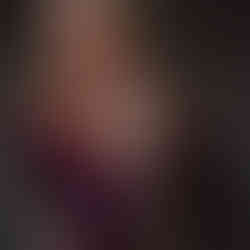Bindi Dance 印度西施
- Robin Yong

- 2 days ago
- 4 min read



A bindi (from Sanskrit bindú meaning "point, drop, dot or small particle") is a coloured dot or, in modern times, a sticker worn on the centre of the forehead, originally by Hindus, Jains and Buddhists from the Indian subcontinent.
A bindi is a bright dot of some colour applied in the centre of the forehead close to the eyebrows or in the middle of the forehead that is worn in the Indian subcontinent (particularly amongst Hindus in India, Nepal, Bhutan, and Sri Lanka) and Southeast Asia among Balinese, Javanese, Sundanese, Malaysian, Singaporean, Vietnamese, and Myanmar Hindus. A similar marking is also worn by babies and children in China and, as in the Indian subcontinent and Southeast Asia, represents the opening of the third eye. In Hinduism, Buddhism, and Jainism the bindi is associated with the ajna chakra, and Bindu is known as the third eye chakra. Bindu is the point or dot around which the mandala is created, representing the universe. The bindi has a religious, historical and cultural presence in the region of India and with the Hindu, Indian diaspora around the world.


A traditional bindi is red or maroon in colour. A pinch of vermilion powder is applied with a ring-finger to make a dot. A small annular disc aids application for beginners. First, a sticky wax paste is applied through the empty centre of the disc. This is then covered with kumkum or vermilion and then the disc is removed to get a round bindi. Various materials such as lac, sandal, 'aguru', mica, 'kasturi', kumkum (made of red turmeric) and sindoor colour the dot. Saffron ground together with 'kusumba' flower can also work. Traditionally they are green in colour with a red dot in the middle. The bindi is no longer restricted in colour or shape.
Historically, the ornamental bindi spangle consists of a small piece of lac over which is smeared vermilion, while above it a piece of mica or thin glass is fixed for ornament. Women wore large spangles set in gold with a border of jewels if they could afford it. The bindi was made and sold by lac workers known as Lakhera. In Hinduism, it's part of the Suhāg or lucky trousseau at marriages and is affixed to the girl's forehead on her wedding and thereafter always worn. Unmarried girls optionally wore small ornamental spangles on their foreheads. A widow was not allowed to wear bindi or any ornamentation associated with married women. In modern times, self-adhesive bindis are available in various materials, usually made of felt or thin metal and adhesive on the other side. These are simple to apply, disposable substitutes for older lac tikli bindis. Sticker bindis come in many colours, designs, materials, and sizes.


There are different regional variations of the bindi. In Maharashtra a large crescent moon shaped bindi is worn with a smaller black dot underneath or above, associated with Chandrabindu and Bindu chakra represented by crescent moon, they are commonly known as Chandrakor in this region, outside Maharashtra they are popularly known as Marathi bindi. In Bengal region a large round red bindi is worn, brides in this region are often decorated with Alpana design on forehead and cheeks, along with bindi. In southern India a smaller red bindi is worn with a white tilak at the bottom, another common type is a red tilak shaped bindi. In Rajasthan the bindi is often worn round. Long tilak shaped bindi are also common, as well as the crescent moon on some occasions. Decorative bindis have become popular among women in South Asia, regardless of religious background. Bindis are a staple and symbolic for women in the Indian subcontinent.



In modern times, Bindis are sometimes worn purely for decorative purpose or style statement without any religious or cultural affiliation. Decorative and ornamental bindis were introduced to other parts of the world by immigrants from the Indian subcontinent. International celebrities such as Gwen Stefani, Julia Roberts, Madonna, Selena Gomez and many others have been seen wearing bindis. The appropriateness of such uses has been disputed. Reacting to Gomez wearing a bindi while singing her song "Come and Get It", Hindu leader Rajan Zed said that the bindi has religious significance and should not be used as a fashion accessory, but Indian actress Priyanka Chopra praised Gomez's choice as "an embrace of Indian culture". Additionally, several rappers have adopted jewelled bindis, most notably Lil Uzi Vert, who debuted a $24 million pink diamond bindi in February 2021. They were inspired by Lil B who wore a diamond bindi in 2012.
The photos are taken at the recent Venice Carnevale. My Italian friend Francesca loves ethnic costumes and after doing the Djinn costume, she decided to do another Indian costume, which she calls Bindi dance. Francesca works as a fitness and dance instructor and her Indian dance moves are really sensational.
The Venice Carnevale is not solely about masks. Local Italians and an increasing number of foreign costumers now prefer historical costumes or painted faces. During Carnevale, the whole Venice becomes a real life theatrical stage, and many of these historical costumes carry deep perspectives...
And as usual, the portraits are just done on the busy streets of Venice and using natural lighting only...It is not an indoor photo studio, there is no artificial lighting, flash or reflectors...With my costumed friends, we just take our street portraiture to an all new level....


















Comments